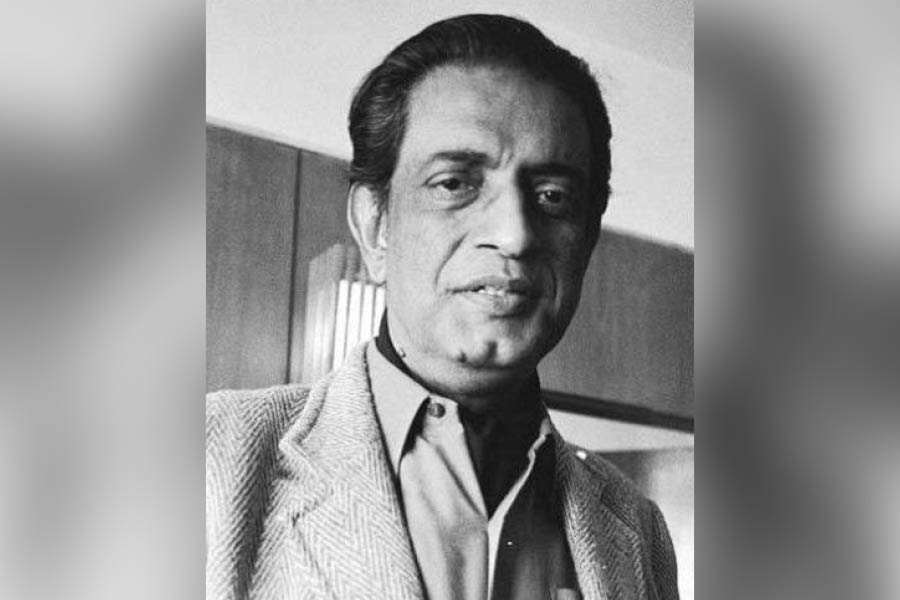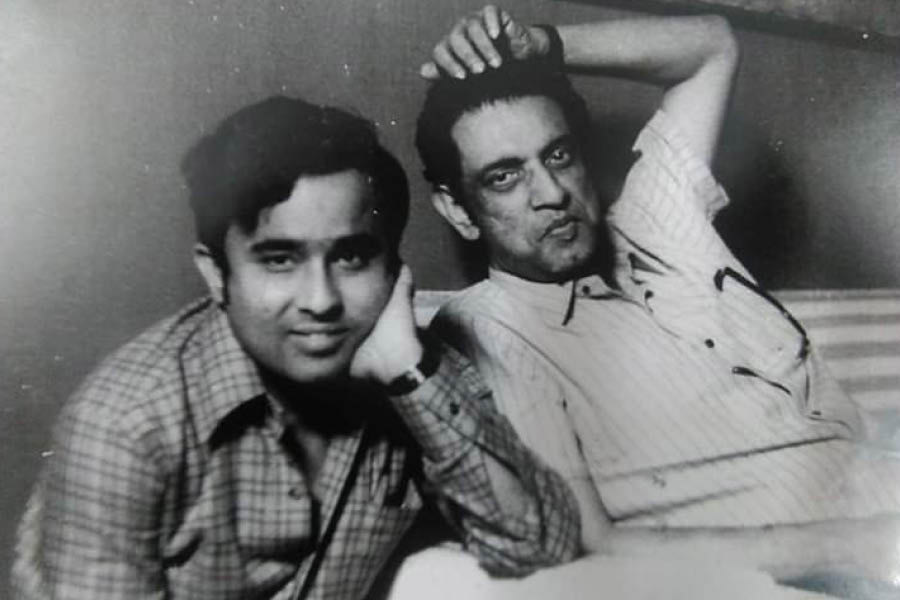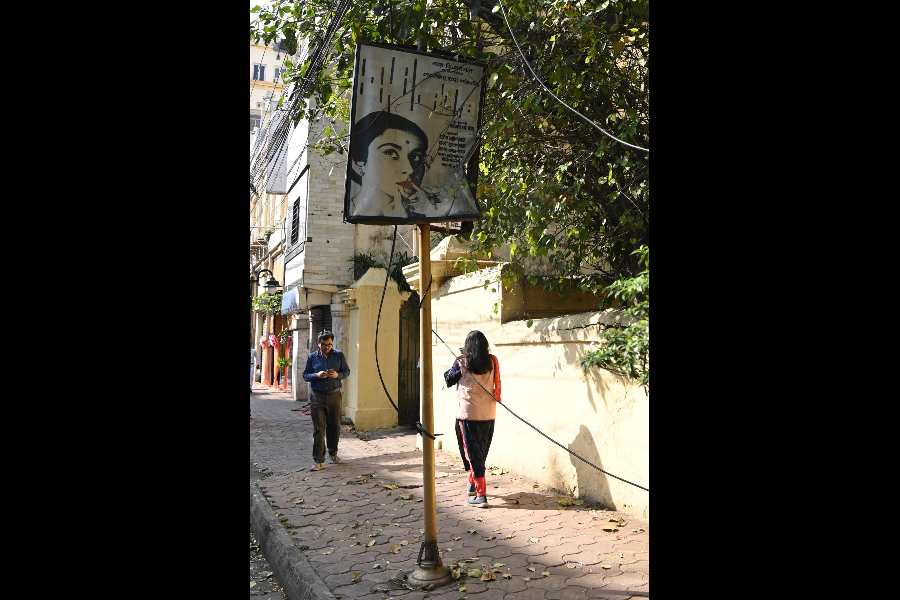If you are a fan of the popular Marvel Cinematic Universe (MCU) franchisee, you will be well aware of the Skrulls – an alien race of green, shape shifting creatures with an evil agenda for taking over the earth. But what if I tell you that nearly 60 years ago, right here in Calcutta, four bright minds came together to create a somewhat similar storyline? As unbelievable it may sound today, it did indeed happen and was part of a remarkable time for the science fiction or sci-fi genre in Bengali culture – and one of the minds spearheading the movement was none other than the legendary Satyajit Ray whose 103rd birth anniversary we celebrate today.
The renowned scientist, Acharya Jagadish Chandra Bose, is widely accepted as the father of sci-fi in Bengali literature – his story Palatak Toofan (Runaway Storm)* – published in 1896 told the tale of a cyclone being enclosed in a bottle of hair oil. In the 1940s and 50s, Premendra Mitra popularised the sci-fi literature genre with his writings. The genre received a major boost through the work of Adrish Bardhan. Bardhan was a keen lover of the genre and in 1953, he launched the first of its kind Bengali sci-fi magazine Ascharjya with himself as the writer, translator and editor and Premendra Mitra as the principal adviser.
Bardhan’s work with Ascharjya attracted Satyajit Ray’s interest. The multi-talented Ray was a big fan of the sci-fi genre and found a kindred soul in Bardhan. Soon, the two young men got talking about what more could be done for the sci-fi genre. The late-1950s were an exciting time for sci-fi. The space race had started in earnest between USA and USSR and reports of UFO sightings and alien abductions were becoming frequent by the day in the West. Ray and Bardhan decided to exploit on this by working on a three-pronged approach.
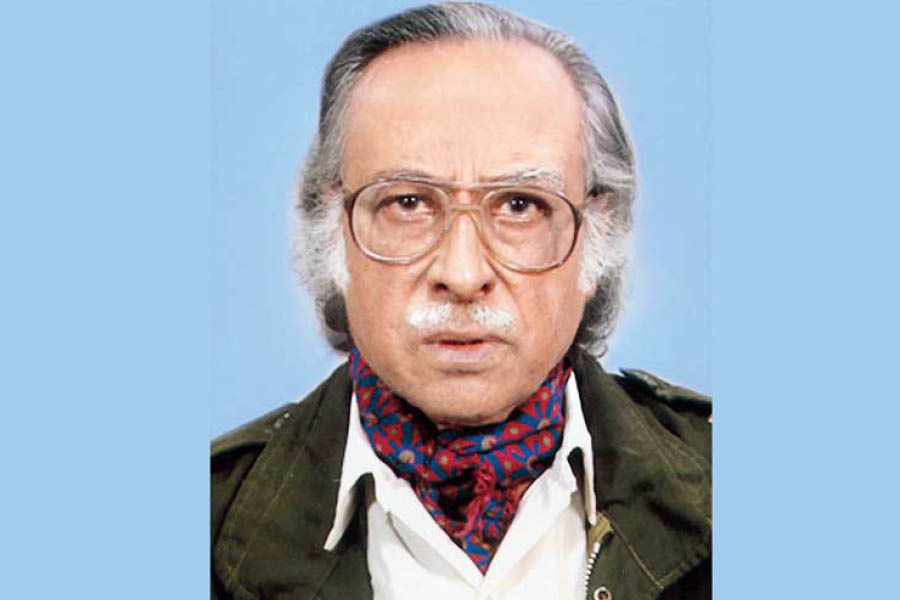
Adrish Bardhan Anandabazar
The three ways or platforms decided were: a dedicated magazine, a radio broadcast and a film club. Bardhan’s Ascharjya was re-born as Fantastic. In March, 1965, Bardhan, Mitra and Dilip Roy Chowdhury had broadcast a sci-fi story titled Mahakashjatri Bangali (Bengali Space Traveller) on All India Radio. In tandem with Ray, Bardhan decided to build on it. Thus was born the idea of Sabuj Manush or Green Men – a race of shape-shifting green aliens. But its novelty lay in the fact that the stories were distinct and being written by four different writers: Ray, Bardhan, Mitra and Roy Chowdhury but existed as part of a shared universe. For context, just think of various MCU films (helmed by different directors) but in textual form. When it was broadcast on All India Radio, Sabuj Manush became a superhit among audiences – Ray’s narration being a cherry on top of the cake.
But out of the three initiatives planned out, possibly the closest to Ray’s heart was the Sci-Fi Cine Club. Ray personally handled all design-related work, from the insignia that he drew himself to the design of the brochure, souvenir and invitation cards. Ray leveraged on his close friendship with sci-fi legend Arthur C. Clarke to send out invitations to some of the biggest names of the sci-fi genre globally. Congratulatory messages were received from Walt Disney, renowned sci-fi writer Ray Bradbury, Clarke himself as well as the President and Prime Minister of India. The launch event – on January 26, 1966 at Academy of Fine Arts – received widespread coverage in local and national newspapers as well as on radio. Bigwigs of Calcutta society as well as representatives from foreign embassies and consulates were in attendance. Calcutta Sci-Fi Cine Club kicked off its journey with the broadcast of the English horror film – Village of the Damned.
Ray kept himself updated with the catalogues of large Hollywood movie studios like MGM, 20th Century Fox, Columbia, Warner Bros. etc. and their Calcutta offices would duly send him updated versions immediately, enabling the master filmmaker to source the titles for screening. Assistance was also sorted from the foreign consulates and a number of Russian and Czech sci-fi films were also shown. The Hollywood adaptation of HG Wells’ iconic sci-fi novel – War of the Worlds – was among the films screened at the Calcutta Sci-Fi Cine Club.
However, eventually, the Cine Club of Calcutta blazed like a rocket – furiously bright but for too short a time. The late-1960s was a very busy time for Ray as he was working on multiple films at the time: Goopy Gyne Bagha Byne (1969), Aranyer Din Ratri and Pratidwandi (1970) and Seemabadhha (1971) among them. More importantly, Ray was preoccupied with his Hollywood project – The Alien, based on his own short story Banku Babu’r Bandhu (Mr Banku’s Friend) – which was to be produced by Columbia Pictures and had Marlon Brando and Peter Sellers in the planned cast^. It resulted in Ray’s involvement in the Cine Club’s affairs dwindling with time. Bardhan, the heart behind the sci-fi revolution in Bengali, was meanwhile besieged by financial troubles, exacerbated by his wife’s ailments.
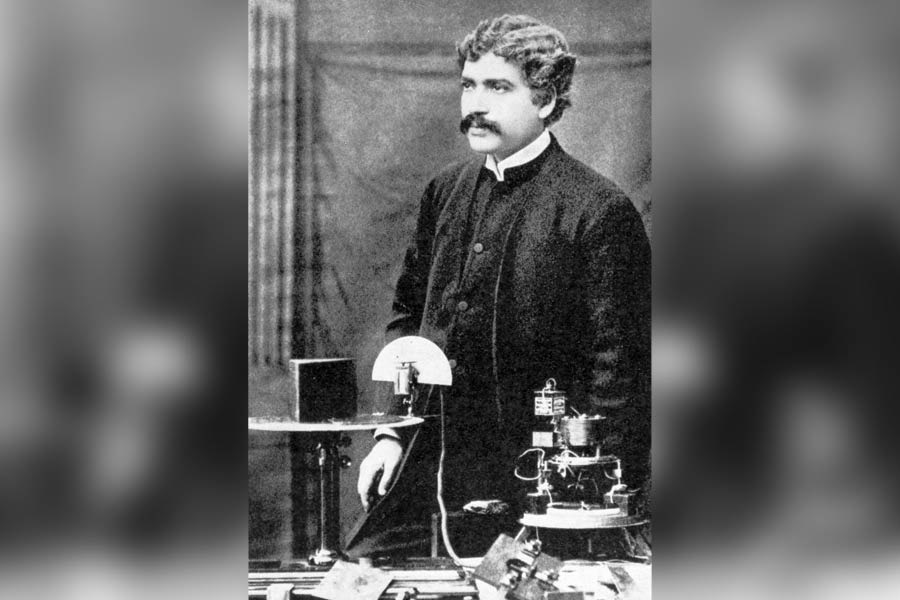
Acharya Jagadis Chandra Bose Wikimedia Commons
Also, foreign language sci-fi films, especially those from Europe, were largely restricted to a niche audience and failed to hit the mainstream among Calcutta’s cinema loving audiences. In 1969, just three years after its momentous launch, Calcutta Sci-Fi Cine Club downed its shutters.
Today, the sci-fi revolution in Calcutta of the 1960s is a forgotten piece of history. Its duration may have been short but for the brief time it thrived, it was indeed imbued with glorious purpose.
* Acharya JC Bose had originally written a sci-fi themed short story in 1896 titled Niruddesher Kahini (The Missing Person’s Saga). This was later expanded by Bose and released as part of his Abyakto collection in 1921 with a new title Palatak Toofan
^ Unfortunately, The Alien never took off. Ray was let down by Michael Wilson, his Hollywood representative. Wilson had The Alien copyrighted as co-scriptwriter despite having no involvement. As the project got delayed, Brando dropped out and eventually, a disillusioned Ray returned to India, abandoning his Hollywood dreams
